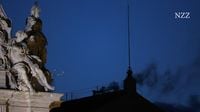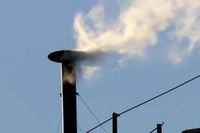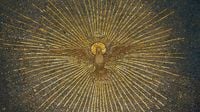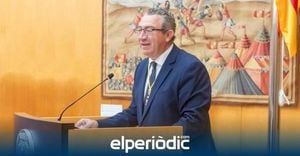On Thursday, May 8, 2025, at precisely 18:12, white smoke billowed from the chimney of the Sistine Chapel, signaling the election of a new Pope by the Catholic Church. This momentous event was preceded by the ringing of the bells at St. Peter's Basilica at 18:09, heightening the anticipation among the gathered crowd. Although the name of the new successor of Peter has yet to be announced from the Benediction Loggia of St. Peter's Basilica, this announcement is expected imminently. Cardinal Protodeacon Dominique Mamberti is responsible for delivering this awaited proclamation.
The conclave, which began on the afternoon of May 7, 2025, saw participation from approximately 133 Cardinals from around the globe, all tasked with selecting the new leader of the Catholic Church following the death of Pope Francis on Easter Monday, April 21, 2025, at the age of 88. This conclave marks a significant moment in Catholic history, as it is one of the few times a Pope has died shortly after Easter, prompting a swift and solemn gathering of the Cardinals.
Among those elected is US-Cardinal Robert Francis Prevost, who has taken the name Pope Leo XIV. At 69 years old, Prevost's election has been met with a mix of excitement and curiosity as he becomes the first Pope to adopt this name, a significant choice that many will be watching closely.
As the conclave unfolded, the Cardinals were sequestered in the Sistine Chapel, a tradition that emphasizes the gravity and confidentiality of their deliberations. Only Cardinals under the age of 80 are permitted to participate, ensuring a focus on the future of the Church. The Cardinals were expected to cast their votes twice daily, with a two-thirds majority required to elect the new Pope. Historically, recent conclaves have concluded within two to three days, and the expectation is that this one will follow suit.
In the days leading up to the conclave, Cardinal Prevost and his fellow Cardinals were housed in the Santa Marta guesthouse, a facility that has become a staple for Cardinals during such events. This five-story building, reminiscent of a hotel, was established under Pope John Paul II and has been a favored residence for its comfort and proximity to the Vatican. Reports indicate that 120 of the participating Cardinals stayed there, while the remaining 13 resided in an adjacent building.
Despite the rigorous atmosphere of the conclave, there were lighter moments, such as when some Cardinals reportedly indulged in the minibar during pre-conclave gatherings. One Cardinal, unaware that the drinks were not complimentary, was surprised to find the charges on his bill—a humorous reminder of the human side of those involved in such a solemn process.
The election process also includes a spiritual dimension, as the Cardinals invoke the Holy Spirit for guidance. Upon entering the Sistine Chapel, they sing the ancient Pentecost hymn, "Veni Creator Spiritus," calling upon divine assistance in their decision-making. This practice connects the present conclave with the Church's rich history and tradition, emphasizing the belief that the Holy Spirit plays a role in guiding their choices, even as they exercise their own judgment.
John Paul II, who himself participated in two conclaves, once described the experience as one of profound spiritual significance. He noted that the conclave is a place where the Cardinals gather to discern the will of Christ regarding the next successor of St. Peter. In a similar vein, Pope Francis has spoken of the "climate of great cordiality" that can develop among the Cardinals during these critical moments, highlighting the importance of mutual understanding and openness in their discussions.
As the evening progresses, the newly elected Pope is expected to make his first public appearance from the Benediction Loggia. Traditionally, he will address the faithful gathered below and impart the Urbi et Orbi blessing, a solemn rite typically reserved for Easter and Christmas. This moment serves not only as an introduction of the new Pope to the world but also as a reaffirmation of the Church's mission and unity.
With approximately 1.4 billion Catholics worldwide, the conclave and the subsequent announcement of the new Pope are being watched closely, not just by the faithful but by people of various backgrounds across the globe. The significance of this event transcends religious boundaries, as it represents a pivotal moment in the leadership of one of the world's largest religious organizations.
In conclusion, the election of Pope Leo XIV marks a new chapter for the Catholic Church. As the world awaits the official announcement and the new Pope's first words, there is a palpable sense of hope and expectation among the faithful. The interplay of tradition, spirituality, and the human experience continues to shape the narrative of the Church, reminding all that leadership is not just a role but a profound calling.






